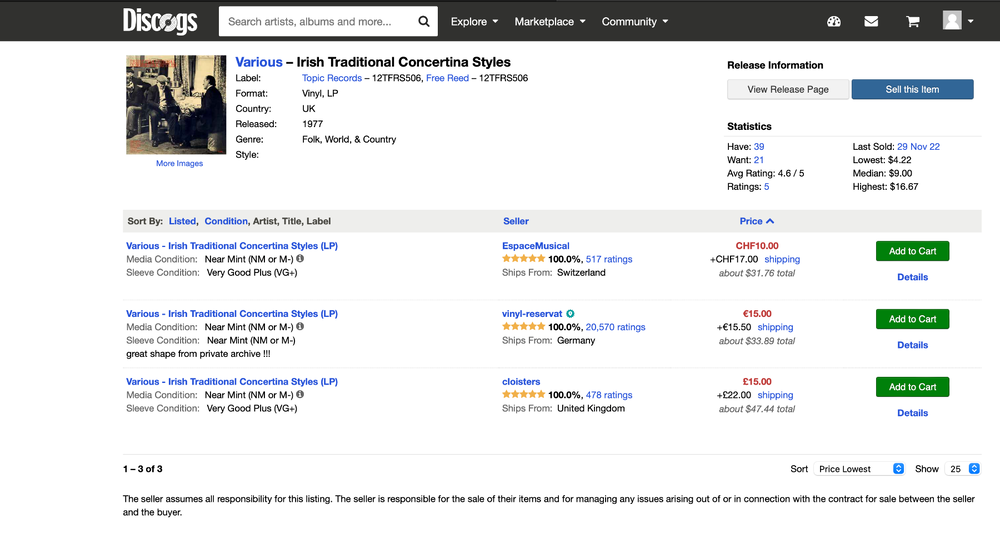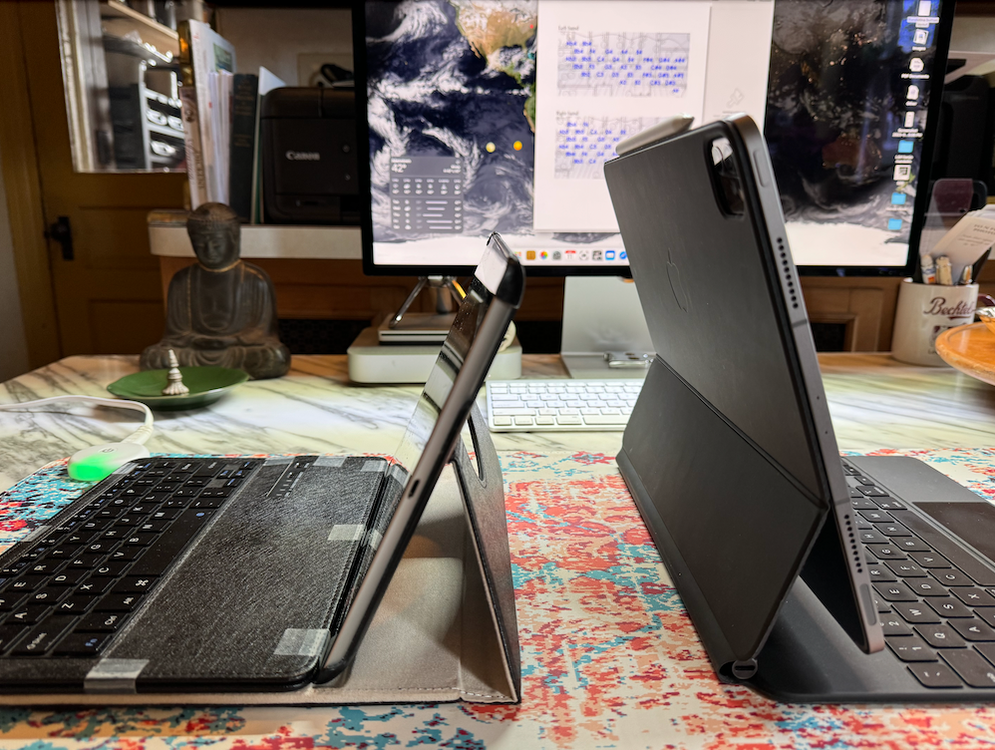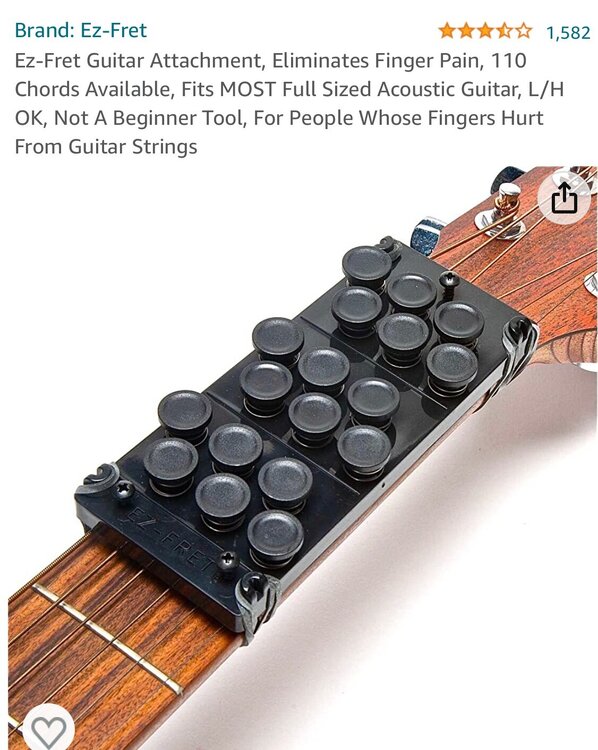-
Posts
66 -
Joined
-
Last visited
Posts posted by mandojoe
-
-
GM, thanks for posting to this thread. Your performances are always well done, varied, interesting, and, not least, educational.
I am also grateful because this thread enabled me to locate the Juliette Daum performance of the famous Bach Chaconne in D minor. This chaconne is the alpha and omega of Western music. I have many recordings of this work in many arrangements, the silliest being a Doc Severinsen excerpt for trumpet ... and the most divine a 1970's LP of Kyung Wha Chung performing the entire Partita #2. Now I have this arrangement for English concertina. There is no way to disagree with Wolf's assessment (just preceding your post) of the recording but, nevertheless, it is always a delight to hear the intricacies of Bach counterpoint regardless of the deficiencies or enhancements of a given instrument or ensemble.
The same may be said for your performance of BWV 1013. Though the piece consists only a horizontal melody on the surface, there are yet multiple voices that create a harmonically rich experience. Thanks.
-
 1
1
-
-
That old bugbear, misattribution, strikes again! Maybe I don't have as many synapses left as I thought. My apologies David. And thanks for the Hayden transcription which, after I get an easier version into my fingers, I'll definitely and with pleasure learn to play.
Yes, I went through ProfRat's YouTube library. Wonder if he's thought about creating a mechanized, remotely-controlled concertina?
Happy New Year!
-
 1
1
-
-
Can't thank you all enough! Dm it is! Thanks for sharing The Session scores and thanks to Don Taylor for his version Danny Chapman's video (which introduced me to a true button meister with whom I wasn't familiar). I think Don Taylor's transposed version just above will be the thing to start with.
Łukasz is right, of course, that his substituted note doesn't sound right (defeats the sweetest angst note in the piece). Łukasz, it's good that I didn't read your 2022 comments about the shortcomings of the Elise until this morning because it might have kept me from buying one. Despite the missing notes, I'm confident this instrument will teach me the necessaries of the Hayden system. It may also force me to get serious about transposing tunes myself ... late in the day for me but I do still have some unused synapses ... somewhere ... I think ...
-
Łukasz, I watched the YouTube Roslin Castle on your homemade duet (sounded GREAT!), but didn't find a rendition on Elise. Thanks.
-
Lacking offers of a used instrument, I bought myself a Christmas present (how many indulgences will Christmas cover this year?) of a new Elise. First day I'm at it (today) I find I'm missing the all important D# needed to play Roslin Castle. Can I just vocalize the D#? Where is Cleo Lane with I need her? Hmm ... more buttons, more money. I'll reluctantly learn to restrict the music to do-able bounds on the Elise. Roslin Castle will have to live only on my Maccann until next year when the bandotina makes its way to my front porch.
-
-
Not to unnecessarily draw this thread out (which has morphed into something other than a Want Ad) but I have to report that I've finally found a use for my old iPad:
This mimics left and right hand button boards using Musix Pro on both machines. Still a long way from a genuine button box, but, it will get me started. Thanks, again, for all for your suggestions.
-
Thanks, everyone. I've now pretty much gotten myself oriented on the ipad and iphone versions of what I'm after. I appreciate your help. I will, however, keep my eyes peeled for an inexpensive something with a bellows, likely a used Elise ... Thanks, again. -- Joe Bartl
-
Thanks for the suggestions. I've downloaded both apps on my ipad and iphone. The MusixPro will take some effort to figure out. On both of the apps, I have to see if I can adjust the orientation of the buttons (right and left for treble and bass; and vertical for scales). In any case, these give me something to work with. The striso looks like fun but requires a larger layout of funds ...
Thanks, again.
Joe Bartl
-
I'm now on Edward Jay's wait list for a bandotina. As this should take at least a year to appear, it seems worthwhile to start learning to play Wicki Hayden duet button boards. I've been working at a Maccann duet for the last couple of years and so an adjustment, to put it mildly, will be necessary. As the bandotina is, for the likes of me, a considerable expense, I'd like to spend alap (as little as possible) on an instrument that will only serve as a learning tool. If you can help, I'd love to hear from you. Thanks!
Joe Bartl
-
Rather like this Arnold. If my copied text doesn't appear, it is the last listing on this page.
Bert Smit's Chemnitzer-
Alfred Arnold Chemnitzer Concertina in "Scheffler'sche Lage", build in 1932. Three reeds per button on the right side, two or three per button on the bass-side. In total there are 52 buttons and 104 tones.
- General view of the instrument from the treble side Color JPEG, (40792 bytes), 497x347
- Close-up of the reeds and the leathers Color JPEG, (36678 bytes), 499x351
- View from the top showing 'Alfred Arnold' metal plate Color JPEG, (28926 bytes), 500x344
- General view on the reeds Color JPEG, (40308 bytes), 492x345
- Front view on the belly Color JPEG, (52075 bytes), 498x347
- General view on the wooden mechanics under the buttons Color JPEG, (33991 bytes), 497x345
- View on the inside of the belly Color JPEG, (25406 bytes), 503x345
- Close-up of the buttons Color JPEG, (32497 bytes), 503x345
-
Alfred Arnold Chemnitzer Concertina in "Scheffler'sche Lage", build in 1932. Three reeds per button on the right side, two or three per button on the bass-side. In total there are 52 buttons and 104 tones.
-
Mellow, indeed. Very lovely sound.
-
 1
1
-
-
And a perfectly balanced arrangement! Possible to share?
-
This might be what you are looking for:
-
I've enjoyed your recent postings! In this one I also enjoyed the cat padding by like a strolling waiter in your pub. Thanks!
Joe Bartl
-
Per the second to last reply (by Daniel Hersh) in the recent "Bandoneon" thread in this same forum:
"You have a Carlsfelder - I can tell because it has three long rows of buttons on each side, unlike a bandonion or Chemnitzer. The three systems have different button layouts. This may be helpful: https://www.bandonionverein-carlsfeld.de/index.php/2-uncategorised/22-heinrich-band . Take a look at this too: https://www.musikwissenschaft.uni-wuerzburg.de/musikinstrumente/organologie/doku/konzertina/ ."
Really, that a look at that thread!
-
Dynamite! Thanks!
-
This may be a case of "imprinting": The first concertina videos I listened to on Youtube were of Soloduet on his Wicki Hayden concertina. That particular sound has embedded in my brain as the ideal. I realize that what I hear is partially a product of soloduet's wonderful performance strengths and of the microphones he uses, sound processing, etc. Still, I have to ask, what is that concertina make and specs? Thanks for any help you can provide.
-
This may be a naive question, but duet tutors are rare enough that I have to ask: How dependent would this tutor be on the specific layout of the Wicki/Hayden Duet? Are duet concertina performance issues similar enough from one duet layout to another that this tutor would be relevant for a Maccann?
-
A melophone?!?!? Goodness! Tuned in fifths (like my mandolin) and it even has a scrolled headstock. I must have one!
-
-
Lovely sound, a bit mellower than bandoneón. How I admire the intimate control regardless of whichever instrument is in your hands! Am I correct understanding that, unlike a bandoneón, the buttons are not diatonic?
-
Thanks, Stephen Chambers. Up close and personal, I can see that the questionable number is definitely a "0". So that places this at the beginning of 1923. This will be a fun little instrument to get acquainted with. Thanks, again.
Joe Bartl
-
Recently purchased from the Buy & Sell Forum a Lachenal 35 button Crane Duet. This was restored by Greg Jowaisas some time ago and seems to be in good shape but for a bellows leak of some kind (it drifts open if held up by one end). In any case, I'm wondering about its age and hope someone on this thread will enlighten me. The serial number would appear to be something like 4066 (can that be right?) Thanks for any light you can shed on this.
-- Joe Bartl






Looking for Bass Anglo Concertina
in Buy & Sell
Posted
As an aside, I have to say, Comac Begley never fails to astound!